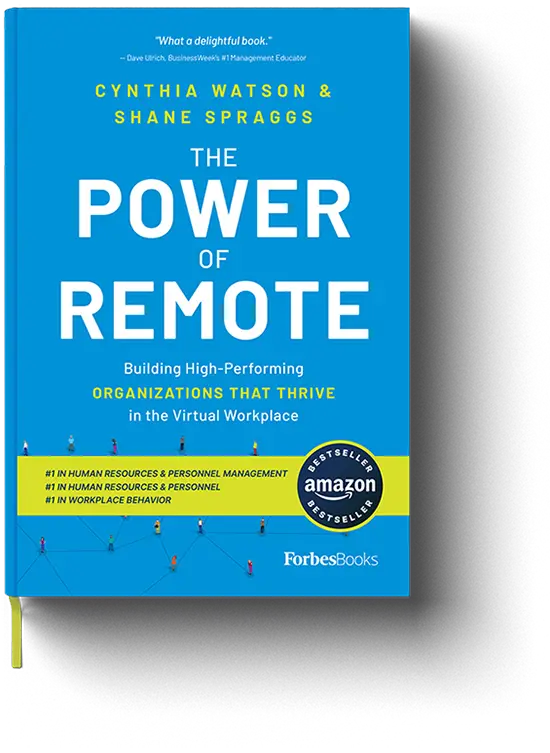Working remotely via flex, hybrid or telecommuting is here to stay for many companies. How to keep those employees engaged remains one of the most important items on many leaders’ agendas.
There are numerous benefits for employees to work remotely, such as saving time and money on commuting and better work-life balance, but there are also potential downsides affecting both employees and companies. Not being in the office and with their team, remote workers can feel less engaged and connected to their company, and productivity can suffer as a result.
Trust is a crucial element of employee engagement, particularly when it comes to remote work. Telecommuters are working on their own islands without an office or boss in sight. If you want to keep them engaged, remote team members need to trust each other and their managers. So the question is, how do you build trust?
Real trust doesn’t happen overnight. It must be built over time, in a cumulative process that involves collective effort and embraces the following five practices:
This is the practice of honest and open communication. Transparency is a two-way street, requiring commitment from managers and employees, and it should take a central role in company culture.
Transparency can be challenging, and there will likely be times when it cannot be fully embraced, as when dealing with strategically crucial information. But in general, the more you and your employees can communicate honestly and openly, the more that trust and respect will develop. Helpful examples of transparency from a manager include:
Admitting that you don’t know the answer to an emerging problem
Acknowledging a mistake
Explaining your or the company’s reasoning behind a certain decision
Relaying bad news personally rather than in an email
Being honest in crisis situations
All of these point toward openness and vulnerability, which help build and strengthen emotional connections and understanding.
As a leader, before you commit to something, be certain that you’ll be able to fulfill the commitment. For instance, a manager who vows to give a bonus to any team member who reaches a certain metric, but then fails to deliver when that metric is met, will quickly lose the team’s trust and commitment.
Once you commit, take the steps you need to take to follow through. On the rare occasion that you’re unable to follow through, own it. Take responsibility for missed expectations, apologize to the team, and don’t make it a habit!
As with other aspects of remote engagement, remote employees need to be held accountable to their commitments, which should include a vow to embrace remote working best practices: to work hard; to stay in regular contact with the team; to be accessible during work hours; to embrace corporate culture; and to be responsible for their home-based workstation.
Ever hear crickets on a call when you ask for feedback? Even on a 1:1? Employees, especially those geared for remote work such as introverts, are often not keen on sharing their views in front of others – especially if it is contradictory to the group or the leadership position. How many flawed projects or market rollouts have commenced because the one person you want to hear from stays silent?
By implementing systems where you encourage feedback, via polling and surveys, you will increase the participation of those who you might otherwise not hear from. This helps them feel more engaged in the process and will strengthen their commitment to the results and overall direction.
Keeping your virtual door open during office hours and welcoming off-hours emails and questions of any kind shows your respect for and interest in your team’s concerns and wishes. You could also make your calendar public so people can see when you’re free and book a quick call.
Being accessible also means maintaining an accurate status on work chat platforms like Slack or Teams rather than displaying the green dot when you’re away from your desk. In addition, being open to quick calls when an issue can’t be resolved through text helps team members feel that you’ve always got their back.
This essentially puts team members on the same level as managers, and few things better encourage employee trust than a horizontal organizational structure. Whenever appropriate and potentially beneficial, bring teams or team members into the decision-making process. It’s hard to overstate the extent to which employees’ sense of connection increases when they feel that they’re able to communicate with their boss as equals. Not only being heard and listened to but also seeing firsthand how their views helped influence the final decision – that’s priceless.
You might also extend this even further and build new processes with your team. Make use of a retrospective to learn what the team needs to start, stop, or continue doing.
That way, they have a stake in laying out achievable goals and implementing them effectively.
Team trust and employee engagement go hand-in-hand, and they are at the core of a successful company. Remote work has increased the challenge of employee engagement, but if leaders implement these practices, they can build the trust among employees that is essential in the remote workforce’s engagement.

With increased demand for hybrid and fully remote work styles, most firms understand that some form of distance work is here to stay – and have put some remote protocols in place. But are they the right ones?
It’s time to take advantage of the many opportunities remote work presents. Stop saying “we’re not there yet,” and start saying “we’ve arrived!”
This book will show you how.